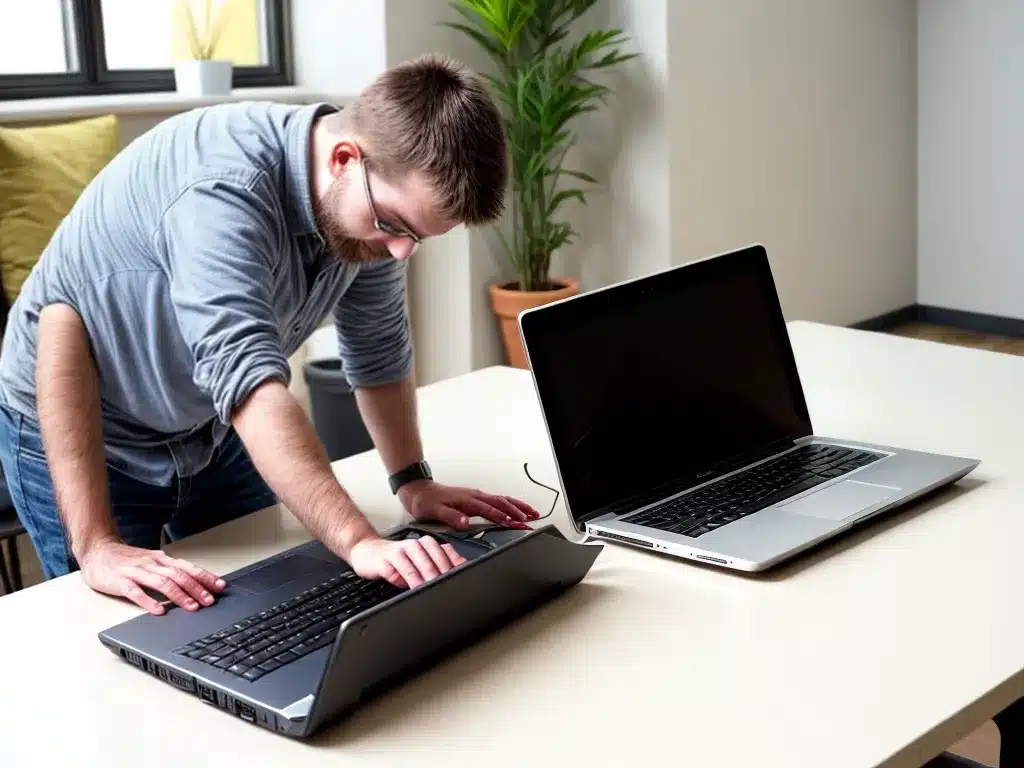
Having wifi connectivity issues with your laptop can be incredibly frustrating. However, there are several steps you can take to diagnose and resolve the problem. In this article, I’ll walk through the most common reasons a laptop won’t connect to wifi and provide troubleshooting tips to get you back online.
Check Your Wifi Adapter Settings
The first thing to check is whether your wifi adapter is enabled and configured properly. Here’s how:
-
Open Network Connections (Control Panel > Network and Internet > Network Connections).
-
Check if wifi is enabled. Right click on your wifi adapter and make sure it is not disabled. Enable it if disabled.
-
Update or reinstall wifi drivers. Your wifi drivers may be outdated or corrupted. Search for updated drivers from your laptop manufacturer’s website and install them. Or uninstall the current drivers and reboot your PC to reinstall fresh drivers.
-
Disable power saving mode. Some laptops turn off wifi to conserve power. Go to Advanced Power Settings and ensure your wifi adapter can reach full power capacity.
-
Toggle airplane mode on and off. Flip the airplane mode switch off and on again to refresh connections.
-
Reset TCP/IP settings. Open Command Prompt as admin and run
ipconfig /flushdnsandnetsh int ip resetto reset TCP/IP settings.
Forget and Reconnect to Your Network
If your wifi settings look correct, try forgetting your wifi network connection and reconnecting from scratch:
-
Go to Network Connections and right-click your wifi network > Forget.
-
Reboot your laptop then search and reconnect to your wifi network by entering the password again.
-
Make sure Connect Automatically is checked when reconnecting.
Check Your Router Connection
Issues with your wifi router/modem can also prevent connectivity:
-
Restart your router and modem. Turn them off for 30 seconds and back on to refresh connections.
-
Ensure router firmware is updated to the latest version. Check for updates through your router portal.
-
Make sure the router is broadcasting your wifi network SSID. Log into the router admin interface and verify wifi broadcasting is enabled.
-
Check if other devices can connect to the same wifi network. That will tell you if the issue is with your laptop or the router.
-
Evaluate your router placement. Move it closer to your laptop to get a stronger signal if possible. Avoid placing near potential interference like microwaves.
Troubleshoot Software and Firewall Issues
Laptop software problems can sometimes disrupt wifi:
-
Update your OS, drivers, firmware to the latest versions. Updates often include bug fixes for wifi connectivity issues.
-
Uninstall VPN clients as they can sometimes clash with wifi drivers. Reinstall after testing.
-
Temporarily disable any 3rd party firewall, security or parental control software to see if that’s the culprit.
-
Create a new user account and try connecting to wifi from there. This will determine if the problem lies with your user profile.
When All Else Fails, Reset Your Network Settings
If you’ve tried everything else with no success, resetting all your network settings may resolve the issue:
-
Open Command Prompt as admin and run
netsh winsock resetandnetsh int ip reset. Restart your laptop after running the commands. -
You can also reset network settings from the Network Reset settings page in Windows. This will reconfigure your network adapter and flush DNS cache.
With some targeted troubleshooting steps, you should be able to fix most wifi connectivity problems on your laptop. Let me know if any of these suggestions helped resolve your issue!












